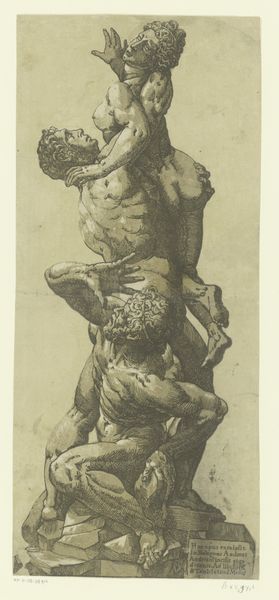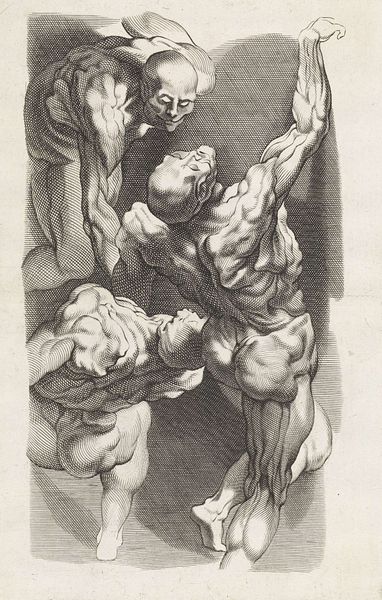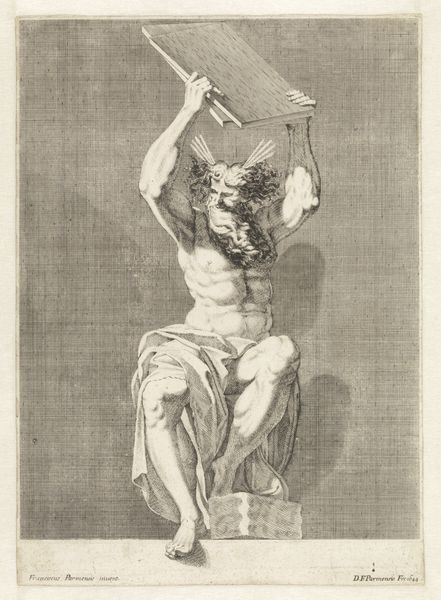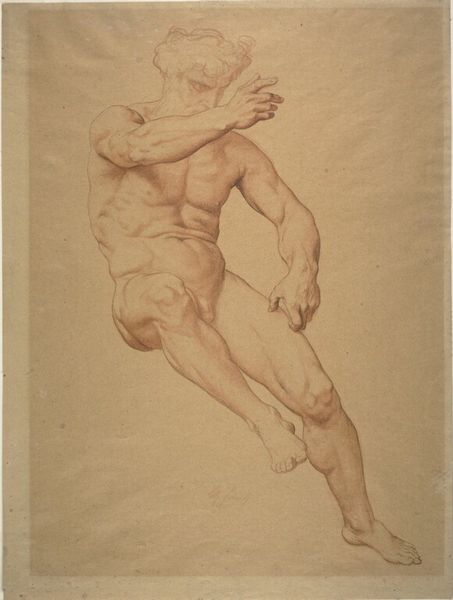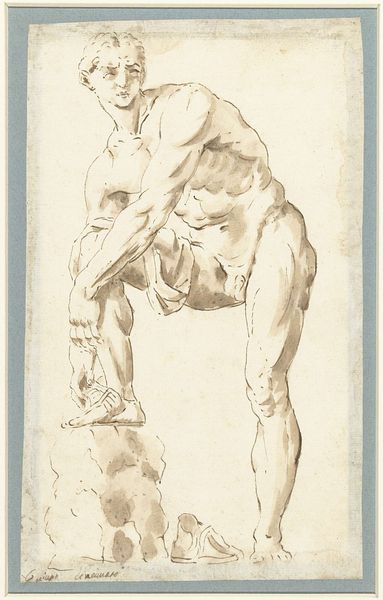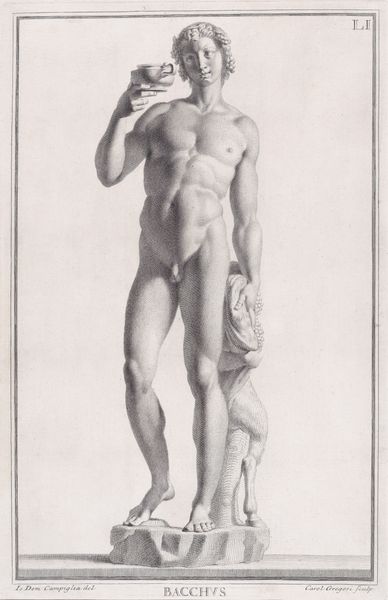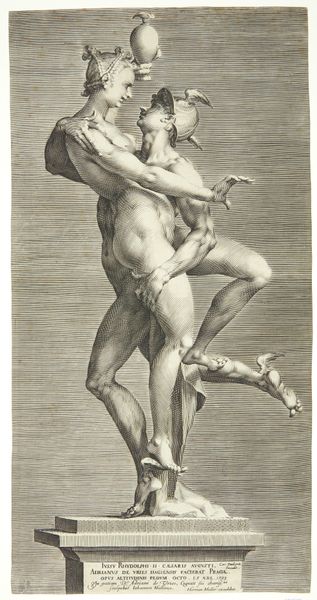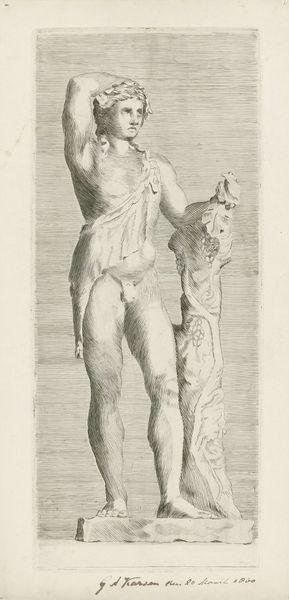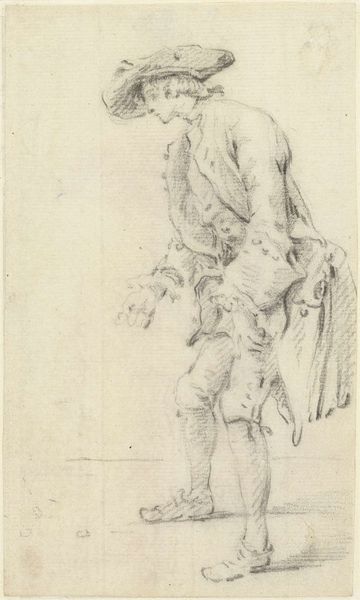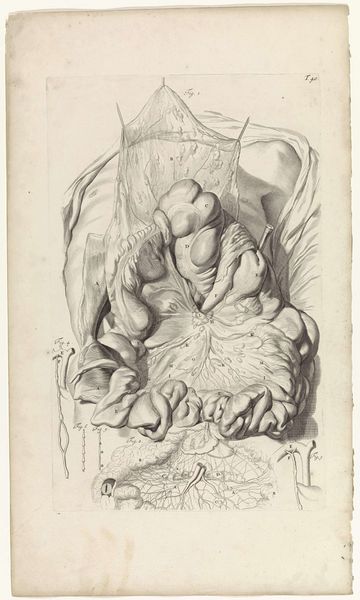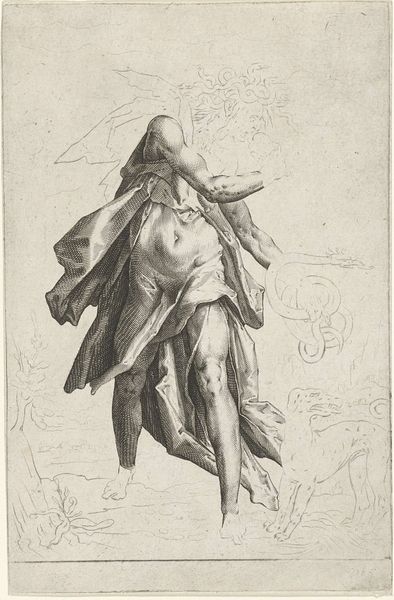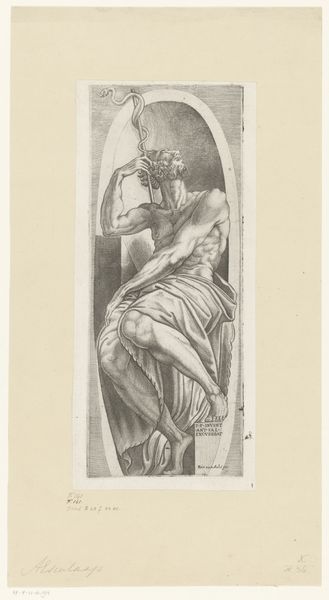
drawing, engraving
#
drawing
#
baroque
#
figuration
#
pencil drawing
#
nude
#
engraving
Dimensions: height 315 mm, width 208 mm
Copyright: Rijks Museum: Open Domain
Paulus Pontius made this anatomical study of three figures with outstretched arms in the 17th century. The figures, devoid of skin, are reduced to pure musculature. The emphasis on outstretched arms immediately recalls the classical motif of the orator or hero, addressing a crowd or making a bold declaration. This gesture, repeated across centuries, echoes in images from ancient Roman sculptures to Renaissance depictions of biblical figures. Think of Michelangelo’s David or even Bernini's Apollo, their extended limbs conveying power and command. It’s a visual rhetoric deeply embedded in our collective memory, a primal expression of dominance and agency. Yet here, the figures lack a clear narrative context. They are stripped down to the essential, muscle and bone. We can see how the image accesses a subconscious level, evoking both awe and a primal sense of the body’s vulnerability. This symbol, the extended arm, continues its journey through art, each appearance subtly altered by the currents of history and culture. Its power lies in its persistent return, always transformed, forever familiar.
Comments
No comments
Be the first to comment and join the conversation on the ultimate creative platform.
